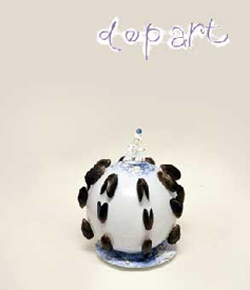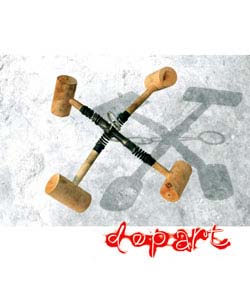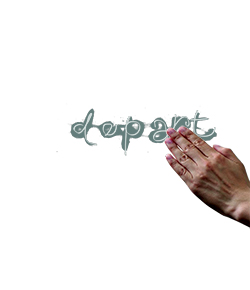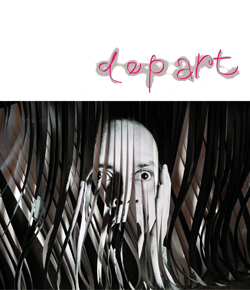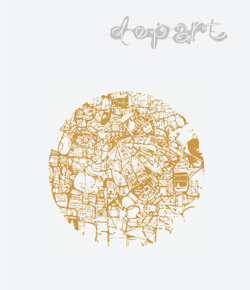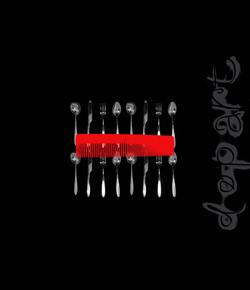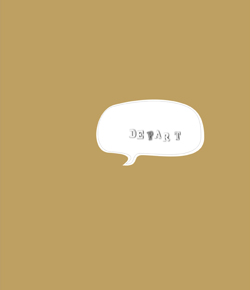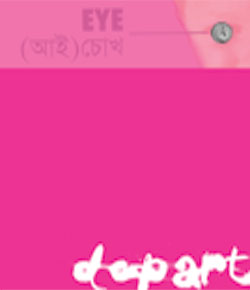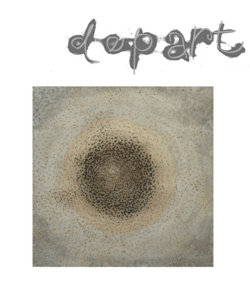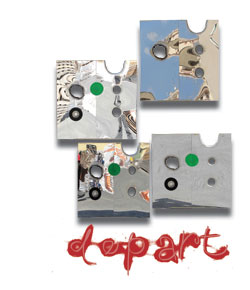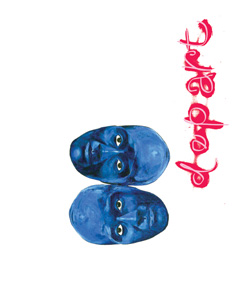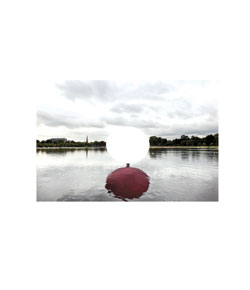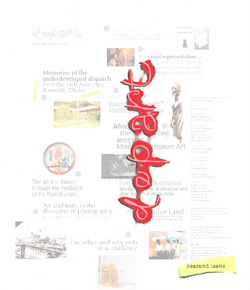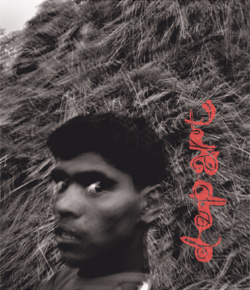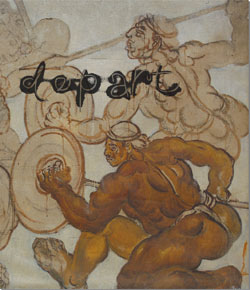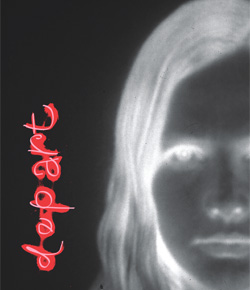Features
The Dhaka Art Summit : Locating South Asian Art within a Global Framework

The Dhaka Art Summit (DAS 2016) returned this year between February 5 and 8 as a research based platform for Bangladeshi and South Asian art focusing on discourse of exchange. 'Cultural, regional, trans-regional, national, intergenerational – in a serious and profound way that illuminates how South Asian visual culture and heritage and its makers are interacting with other (art) histories,' aptly describes the Summit as written by the Artistic Director, Diana Campbell Betancourt, in her preface to the solo projects in the DAS exhibition guide.
Somewhat surprisingly she takes her queue for the 17 major solo projects on show from Rabindranath Tagore's poem Prashna (1938) that tries to locate the miniscule self within the overwhelming expanse of the universe with a clear nod to the frontiers of modern science. The 'Solo Projects' were either special commissions for DAS or highly acclaimed and already existing works from artists working in South Asia, Europe and the US. Of these the most intriguing was expectedly Tino Sehgal's 'constructed situation' Ann Lee(2011), which we 'witnessed' in an enclosed space on the ground floor of the Bangladesh Shilpakala Academy, the event's main venue.

True to his oeuvre, Sehgal had ensured that Ann Lee was not recorded in any way other than in viewers' memory and could therefore be experienced only as a direct encounter with one of the five teenage girls bringing it to life. An enactment and verbalization of the transformation of a cheap, Japanese Manga animation character into a 4 dimensional piece of contemporary art, Ann Lee proceeded to unnerve us viewers with fundamental questions about the nature of being. A similar philosophical inquiry charged the works of Mustafa Zaman. Quiet introspection pervaded the 20 digital prints that represented his new series of altered photographs, Lost Memory Eternalised (2016). Globs of honey with dead ants floating in it were poured onto images of iconic moments/individuals from regional cultural history and re-photographed and printed again to arrive at a supra-linguistic comment on the immateriality of history, memory and time. Another Bangladeshi artist Ayesha Sultana's multi-object installation, A Space Between Things (2016) tiptoed around a resonant query into the nature of reality, particularly landscapes, through 10 separate pieces created from found and reclaimed materials installed on, above and around a loosely tiled floor. With this she hoped to explore the layered notion of landscape in the context of built, urban architecture and the duality of the material and immaterial, but the work came across as little too insular and evocative in the Modernist sense despite an exciting juxtaposition of textures and rhythms. Pakistan's Waqas Khan's eight panels of meditative drawings (The Text in Continuum, 2015-16) that lineally transferred every change in the artist's breath and emotions onto paper through ink was yet another exploration of the landscape reminiscent of that of Sultana's, but a discretely inner one. Upstairs, India's Prabhavathi Meppiyal's dp sixteen (2015-16) transferred the architecture of the ceiling to the floor through white, painstakingly sanded gesso cubes that disoriented us viewers into questioning our location in the scheme of the exhibits – not unlike Rabindranath's poetic query.


Shakuntala Kulkarni's set of five body armours woven from cane following traditional methods wittily spoke of violence and trauma without receding into the passé. “The body of the citizen, especially the female citizen, faces pervasive threat as we negotiate an epoch of escalating terror and violence, … an armoured body can extend its capabilities through the mailed fist, the spiked helmet, the radiation-proof bodysuit, or heightened fight/flight reflexes. But the body pays for this protection with its freedom. The armour becomes a cage. The self becomes prosthetic: protected by, yet trapped within, an exoskeleton,” writes Ranjit Hoskote about her work in Of Bodies, Armours and Cages.1 Violence, as a social gesture of exclusion, was also central to the Burmese artist Po Po's VIP Project in which he documented his interventions in Yangon and Dhaka through digital prints and video. VIP signs were inserted in public spaces across the two cities – at bus stops, busy cross sections etc – and people's habit-induced reactions to these provide a clear yet succinct comment on South Asia's exclusionary political and cultural norms.
Mining Warm Data, also curated by Campbell Betancourt, was an explosion of subterranean resistance and its documentation by 18 South Asian artists. The body of exhibits was structured around the collaborative project of Mariam Ghani and Chitra Ganesh (Index of the Disappeared) of which Black Site: The Seen Unseen (2015-16) was on view. Comprising light boxes, neon signs, videos and an accompanying series of water colour portraits, the series offered a cartography of US sponsored interferences and silencings in the post 9/11 reality of Afghanistan. State-sponsored disappearances also imbued the animal-hide sculpture of a decomposed, tortured body (Lost and Found, 2012) by Pakistan's Huma Mulji. Bangladesh born Hasan Elahi's composite digital prints showed a fraction of the 32,000 self-surveillance images that he had taken since 9/11 as a gesture of resistance to an FBI investigation into his everday movements.

Next to this hung Nepal's Hitmaan Gurung's I Have to Feed Myself, My Family and My Country (2013) and the subtle juxtaposition bore witness to Campbell Betancourt's curatorial acumen. While Ghani, Ganesh and Elahi voiced their resistance through acute and rigorous documentation, Gurung's work hinged itself on pseudo-documentation through collaged currency notes and commented on governmental indifference towards the hardships faced by millions of Nepali migrant labourers worldwide. Three images of performances by Tibet's Nortse (Prayer Wheel, Big Brother and Automan, 2007) hung nearby and 'alluded to the personal struggles that Tibetans living in Tibet face, where they are expected to be either the traditional pious Tibetan, the corrupt informer or even, perhaps, the superhero, all idealised imaginings of a Tibetan as seen through Western eyes.' Labour and its exploitation returned in Jaffna's S. Hanusha's multi-object installation that went digging into the traumatised lives of generations of Sri Lanka's tea-plantation workers. Through a clever play on words, objects and archival photographs Hanusha helps unravel the 'indelible stain', much like what tea itself leaves behind, that exploitation and deprivation leave as residue on the self and the community.

Nearby, Amar Kanwar's three digital videos – The Face (2004), Thet Win Aung (2004) and Ma Win Maw Oo (2004) – selected from the well known series The Torn First Pages (2008) record Burma's struggle for democracy through intimate yet surrealistic visual rhythms. Upstairs, in the Performance Pavillion, Ali Asgar addressed the issue of violence initiated through social constructs like gender through his performance Inside the Zone, Outside your Conscience (2016). At one corner I also caught Manmeet Devgun inscribing an autobiographical text with match sticks on the floor as she vented the experience of personal time and memory.
The nod to modern science triggered by Rabindranath's poem continues in the Nada Raza curated The Missing One, picking up strength through a reference to the Gaganendranath Tagore painting of 1922, Resurrection based on Jagadish Chandra Bose's short story. Almost following a science-fiction narrative's structure, this section at DAS brought us a selection of 22 artists, whose works flowed between the intensely witty Probe Intervention (digital slideshow, 2003–04) by David Alesworth, the wide-eyed wonder of Sahej Rahal's documented performance Tandav III (2012) and Hajra Waheed's metal print (Still Against the Sky, 2015); or the gestural entendre of Neha Choksi's Skyfold 8 (2013) that typifies her usual 'contemplation of presence through the gesture of absence' and Tejal Shah's video piece called Landfill Dance (2012) that brings us a medievalist, pantomime dance routine performed in an overflowing landfill.

More than 500 international art world heavyweights had descended upon the Summit, including those from institutions as exciting as the MOMA, the Tate, the Stedelijk, Documenta and The Serpentine. A slew of talks, panels and a lively film screening and performance programme kept up a busy hum at all hours. A section devoted to Bangladesh's architectural heritage further added context to the exhibits. However it were Rewind and Soul Searching that exemplified the 'Summit's mandate as a research platform by assembling works from public collections in Europe, South and South East Asia, and the United States that chart the diverse manifestations on abstraction in pre-1980's South Asia'. It indeed was an extraordinary selection that allowed us a peek into works not easily available for viewing and opened up a fresh understanding of the trajectory that artmaking has taken, and the many silences that go with it, in this region.
A clutch of rarely seen before print works and paintings by Bangladesh's Safiuddin Ahmed (1922 -2012) allows us a glimpse of a semi-abstract tradition that coincided with but differed from the lyrical realism of the more well known Zainul Abedin's. Abstraction also wove together the tapestries that hung nextdoor, by the Mumbai based Monika Correa, who explored nature's vitality through textured weaves. The weave bursts into brilliant, unlikely exuberance in the eight tapestries by Rashid Choudhury (1932-1986) and capture Bangladesh's cultural and geophysical diversity through minimalist motifs in rare fluidity. Five works of Zahoor Ul Akhlaq (1949-1999) and another 16 by Anwar Jalal Shemza (1928–1985) acted as infrequently opened windows into Pakistan's encounter with modernist abstraction post-1960. Akhlaq's minimalist drawings were particularly interesting given his fame for being the architect behind the neo-miniaturist trend that has somewhat overwhelmed Pakistani contemporary art today. Yet another exciting glimpse, this time into a rarely explored art historical narrative, was on show through the works of Bagyi Aung Soe (1924-1990) of Burma. The quirky, felt-pen illustrations breathed life into the myth of Bagyi, the eccentric artist/writer/actor who led the Burmese modern art movement. The Indian contingent in Rewind was represented by Arpita Singh, Nalini Malani, Krishna Reddy among others and offered an interesting juxtaposition across media as diverse as Malani's 2-channel digital video (Utopia, 1969-76), etchings and drawings by Singh from the 1980's and 12 intaglio prints by Reddy created between 1952 and 1973. Bangladesh's S M Sultan's luminous watercolour landscapes and Sri Lankan Lionel Wendt's photographs added further excitement to an already vibrant exposition that wove together parallel yet distinct narratives, which permeated artmaking in South Asia during the second half of the 20th century.

The section called Soul Searching was devoted to the works of 52 artists, who have helped build the identity of pre- and post-Independence Bangladeshi art and many of whom continue to practice today. Though Soul Searching was meant to trace the cultural influences and roots that inspired a senior generation of artists, it happily ended up as a cartography of the contextual hinges that hold together and inspire the artmaking of even the newest generation of contemporary artists in Bangladesh today.
The Samdani Art Award curated by Daniel Baumann went to Rasel Chowdhury's contemplative documentation of railway stations. Chowdhury's intriguing selection of mundane moments contrasted with Shumon Ahmed's ominous but compulsively lyrical images of Bangladeshi ship graveyards. Zihan Karim's Habitat (2013) co-created with Korean artist Chang Wan Wee also deserves mention for its jarring juxtaposition of things typically South Asian – where else in the world would you find a Beatles song keeping beat to a video of the daily tribulations faced by a whole community displaced by airport construction?
I left Das 2016 with the feeling that it is morphing into something quite extraordinary, something capable of not just making a mark on the global art map but quite possibly forcing that cartography to undergo an unforeseen change in the not too distant future.
KURCHI DASGUPTA is an artist and writer based in Kathmandu.
Note
- Exhibition Catalogue, Mumbai, Chemould Prescott Road, 2013.




